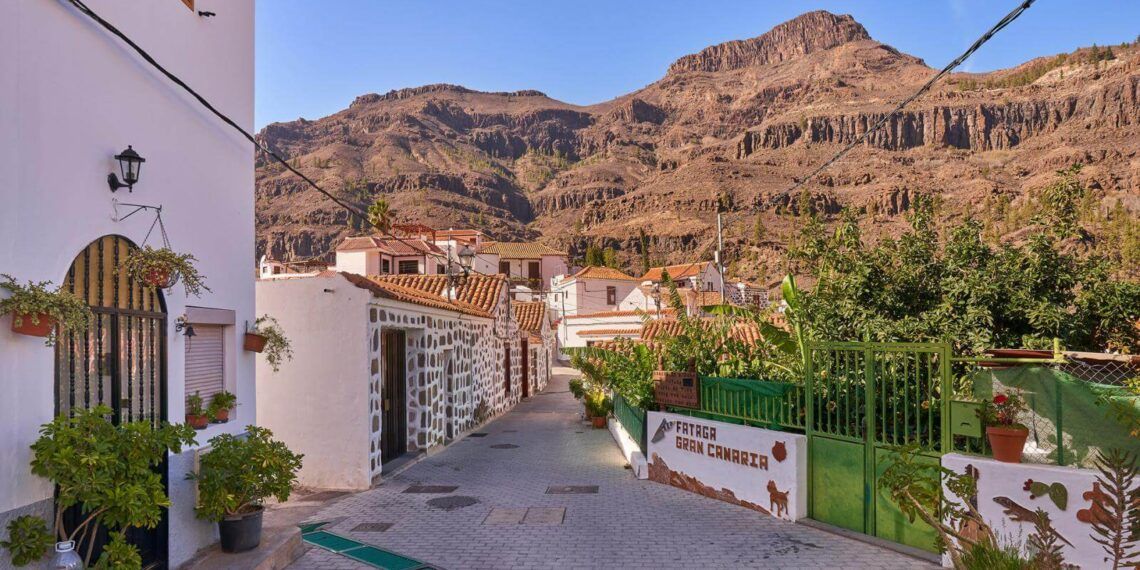Scattered across the rugged terrain of Gran Canaria, San Bartolomé de Tirajana is characterized by its small, white hamlets and rustic charm. Located 34 miles south of the island’s capital, it is the largest municipality on Gran Canaria, stretching from the coast to the island’s Central Massif.
Playa del Inglés, a four-mile stretch of sandy beach, stands as a major draw for visitors. This beach is renowned for its proximity to the area’s mesmerizing sand dunes, a natural wonder that looks like an authentic desert landscape. The dunes, covering an area of 2.5 square miles, are a striking feature against the backdrop of a 3.5-mile-long beach.
The allure of Playa del Inglés goes beyond its natural beauty, offering luxurious 4- and 5-star resorts, bungalows, wellness and spa centers, a versatile convention center, two golf courses, a theme park, and an extensive array of shopping and dining options. The area attracts millions of tourists annually, including couples, families, nature enthusiasts, and fans of water sports. Additionally, Playa del Inglés is a renowned destination for the global LGBTIQ+ community, offering an inclusive and respectful environment for relaxation and entertainment.
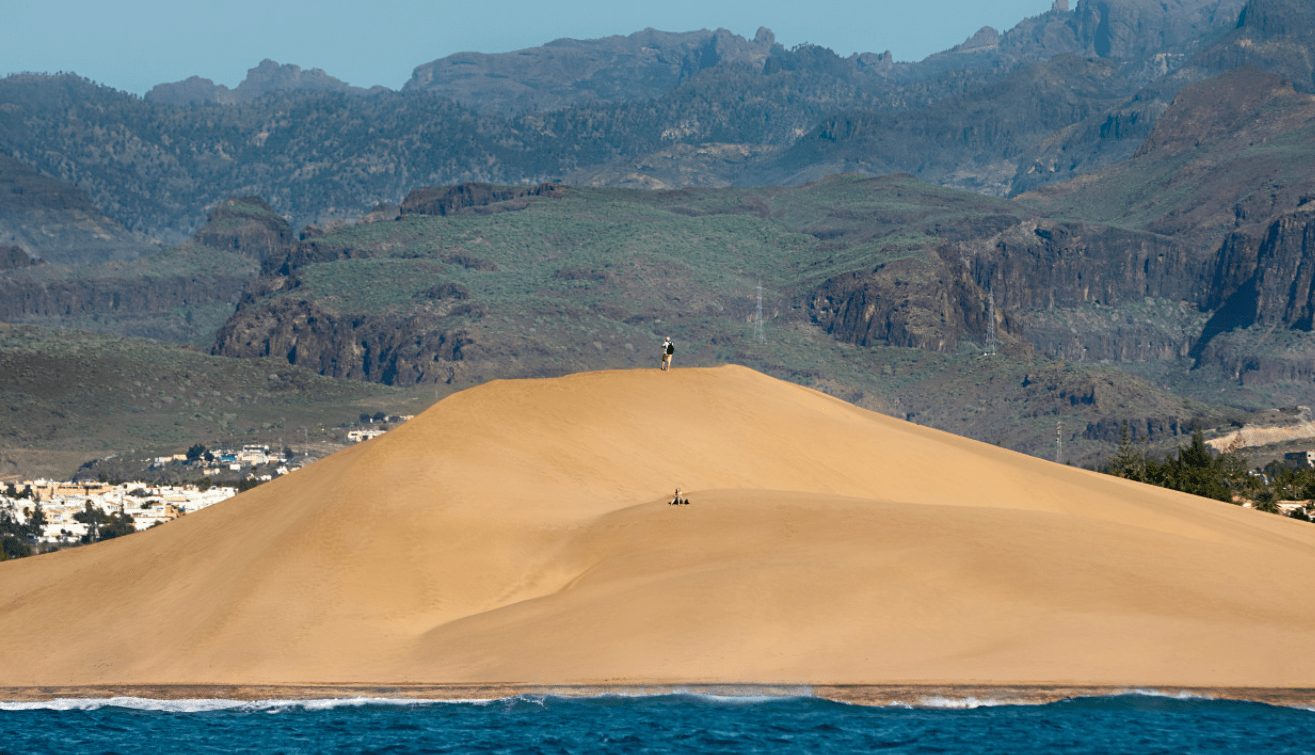 But San Bartolomé de Tirajana has more to offer than just its beaches. The municipality’s rural roads and pathways give visitors the chance to explore the local historical heritage, way of life, and vibrant culture.
But San Bartolomé de Tirajana has more to offer than just its beaches. The municipality’s rural roads and pathways give visitors the chance to explore the local historical heritage, way of life, and vibrant culture.
A Walk Around Tunte
Historically known as Tunte, the capital of San Bartolomé is nestled at the foot of the Morros del Pinar, alongside the Tirajana Ravine at an altitude of 890 meters. Located in the center of the Tirajana Crater, it serves as a key communication hub between the island’s northern and southern regions and is celebrated for its hiking trails.
The central area of Tunte has a tapestry of architectural styles on display, reflecting the town’s evolution throughout history. Noteworthy landmarks include the church of San Bartolomé and La Panera de Tunte, a charming café/bakery established in 1848.
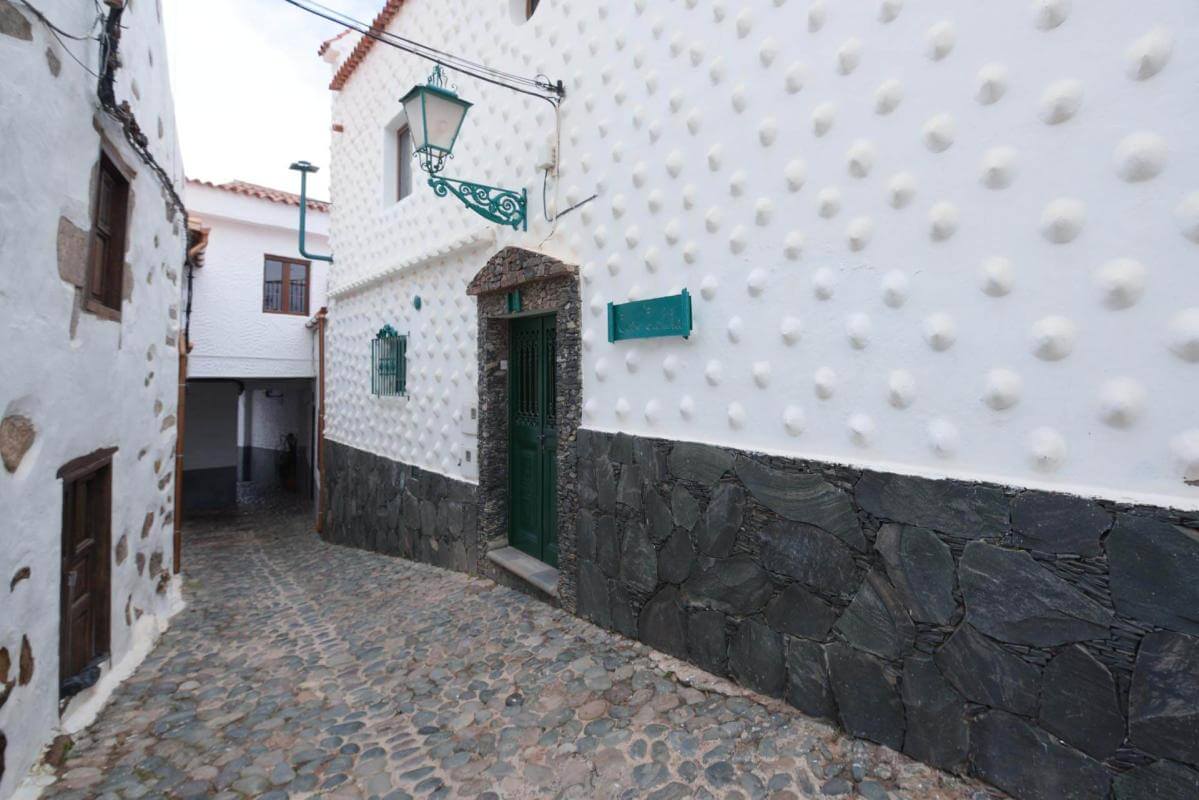 A stroll through Tunte reveals nearly 500-year-old houses adorned with artful touches and lush plant-filled patios, alluding to a life deeply connected to nature. Local cafes and restaurants offer traditional dishes and drinks, such as guindilla—a liqueur made by infusing wild cherries in strong rum. Culinary delights that showcase the region’s customs and identity are central to local celebrations.
A stroll through Tunte reveals nearly 500-year-old houses adorned with artful touches and lush plant-filled patios, alluding to a life deeply connected to nature. Local cafes and restaurants offer traditional dishes and drinks, such as guindilla—a liqueur made by infusing wild cherries in strong rum. Culinary delights that showcase the region’s customs and identity are central to local celebrations.
The annual festival in honor of San Bartolomé, held during the third week of August, is when the town is at its most vibrant. While rooted in Christian tradition, the festival today features a rich tapestry of events, including dance, folk music, concerts, and competitions. One of the highlights of this celebration is the lively food fair, where stalls brim with spring onions, all kinds of barbecue, oversized sweet potatoes, local cheeses, and a diverse selection of wines, creating a festive atmosphere in the town’s picturesque square.
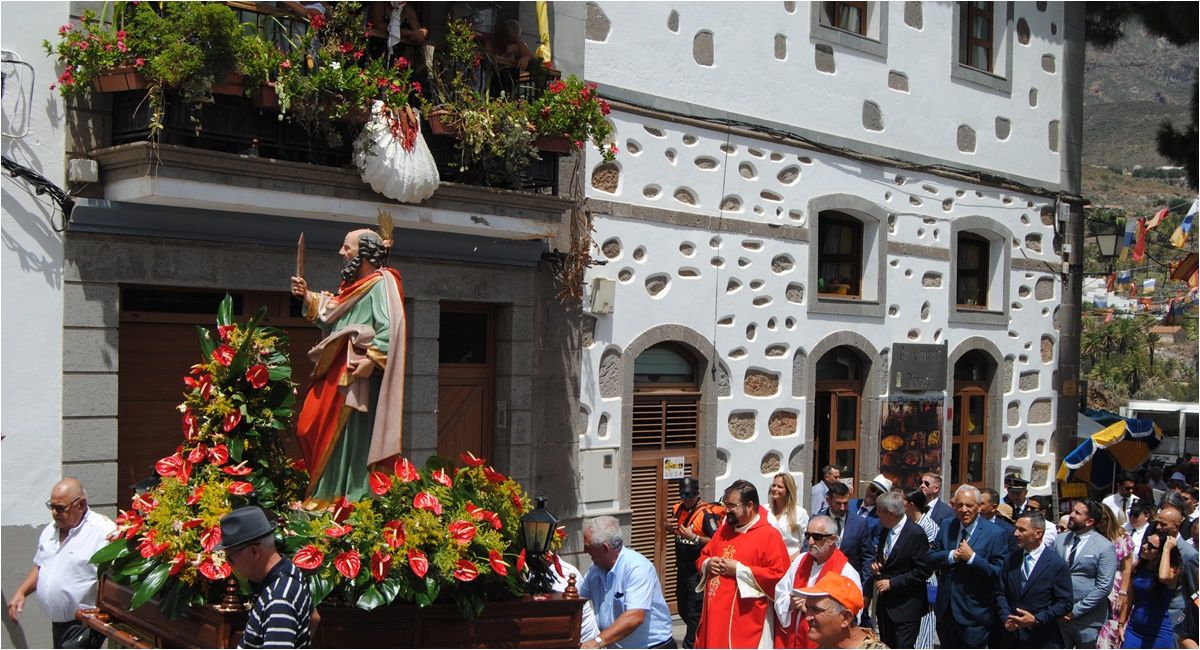 Discovering Fataga: The “Valley of the Thousand Palms”
Discovering Fataga: The “Valley of the Thousand Palms”
Located just a short drive from San Bartolomé, Fataga is another gem in the municipality; it is known for its stunning natural beauty and historical significance. Often referred to as the “Valley of the Thousand Palms,” Fataga is celebrated for its lush palm groves and picturesque landscapes.
The village of Fataga, perched on a hillside overlooking a fertile valley, offers visitors a glimpse into the traditional Canarian lifestyle. Its narrow, winding streets are lined with whitewashed houses adorned with vibrant flowers, contributing to the town’s enchanting atmosphere and earning it recognition as one of the most beautiful villages in Spain.
Fataga’s unique geography is the result of its location in a lush valley that benefits from the moisture carried in by the winds from the surrounding mountains. This oasis-like environment supports a variety of flora, including the iconic palm trees that give the village its nickname.
A visit to Fataga reveals a rich cultural heritage, with several historic buildings and landmarks. The village’s main square, Plaza de la Iglesia, is home to the Church of San José, a charming example of Canarian religious architecture. The church, built in the 19th century, is the focal point for local festivals and events.
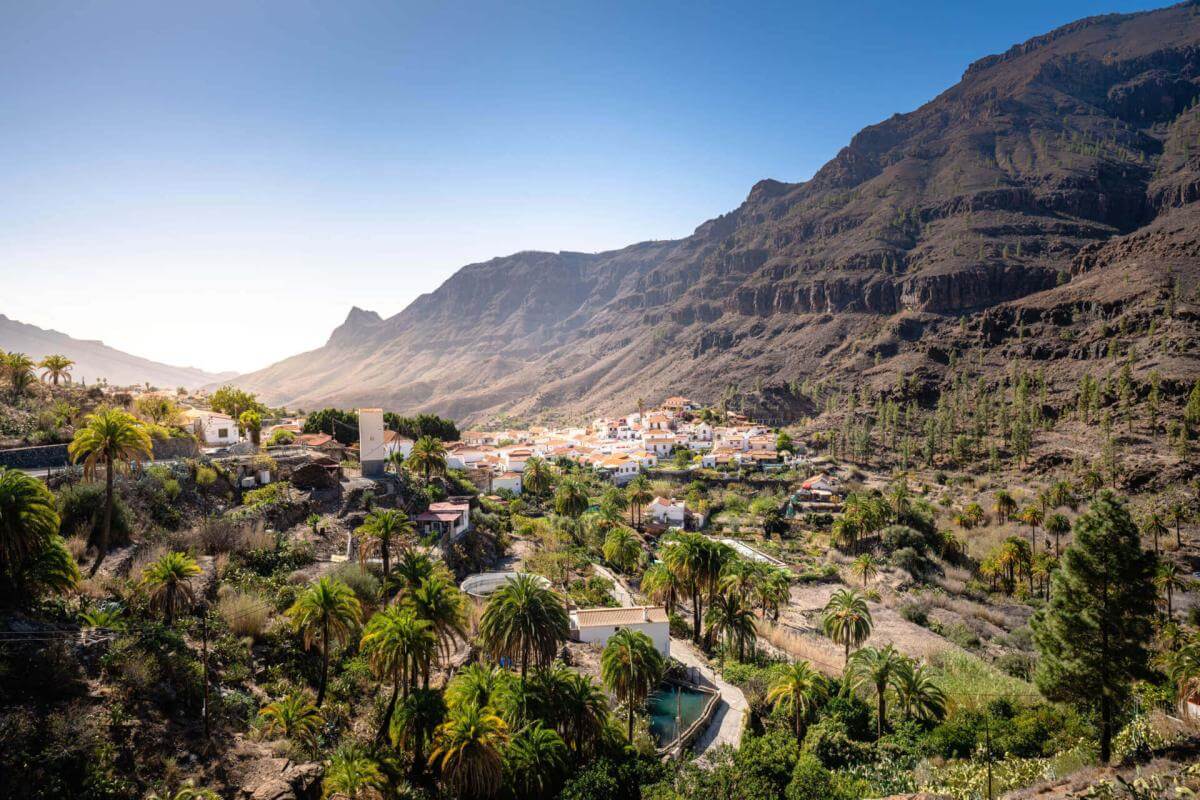 Fataga is also a popular destination for hikers and nature enthusiasts. The surrounding area has numerous trails winding through the valley and up into the nearby mountains, providing breathtaking views and opportunities to explore the region’s diverse flora and fauna.
Fataga is also a popular destination for hikers and nature enthusiasts. The surrounding area has numerous trails winding through the valley and up into the nearby mountains, providing breathtaking views and opportunities to explore the region’s diverse flora and fauna.
Together, Fataga and Tunte offer two tranquil and culturally rich alternatives to the more well-travelled tourism spots around Gran Canaria, allowing visitors to experience the island’s natural beauty and heritage in a more intimate setting.

